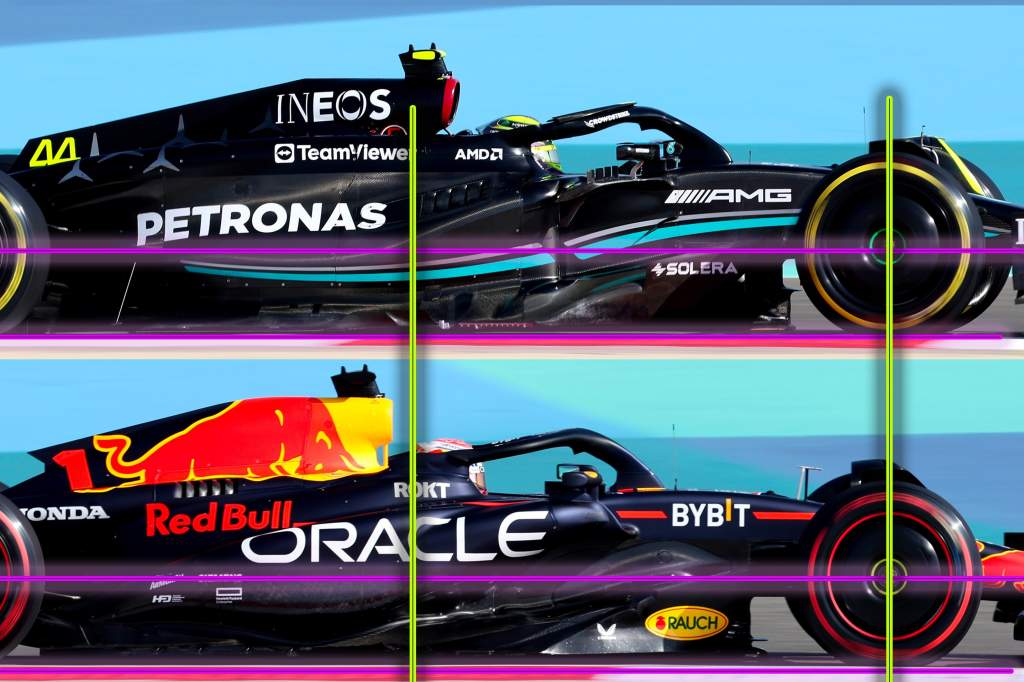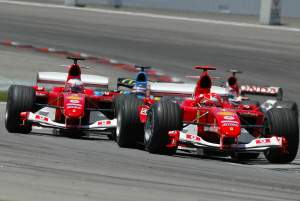Up Next

Lewis Hamilton’s criticism of the cockpit position in the Mercedes W14 makes for interesting reading. It’s certainly the case that the driver position relative to the front and rear axle is significant in the driver’s feel of a Formula 1 car and how they judge any input or reaction needed to get the best out of any situation.
F1 cars are never steady-state and are always on the move one way or another. The feeling the driver gets through the seat of the pants is what they react to, and committing to how fast the turn-in speed should be is all about the confidence that you build up from corner to corner.
If the car understeers when the driver turns in, they will simply apply a bit more steering lock while waiting and hoping that it will bite and the front will react. But during that phase, the car will be slowing slightly so understeer is very detrimental to laptime.
In a well-balanced car, on turn-in the front will bite immediately and the rear will slip slightly while the yaw angle is building up.
To get the best grip level out of the tyres they need to slip to a certain extent. This is called the slip angle. As for the front tyres, this can be initiated by the driver and that happens first so the driver is waiting on the rear tyre to generate its own slip angle.
In reality, the driver has no control over this, they just have to have confidence it will happen and the rear of the car will stop rotating before it gets to too much of an angle where the aerodynamics are compromised. After that, it is called a ‘snap’ as the rear just rotates too fast for the driver to collect it.
The driver needs to have the feel and confidence that this rotation will stop when the tyres achieve that maximum yaw angle.
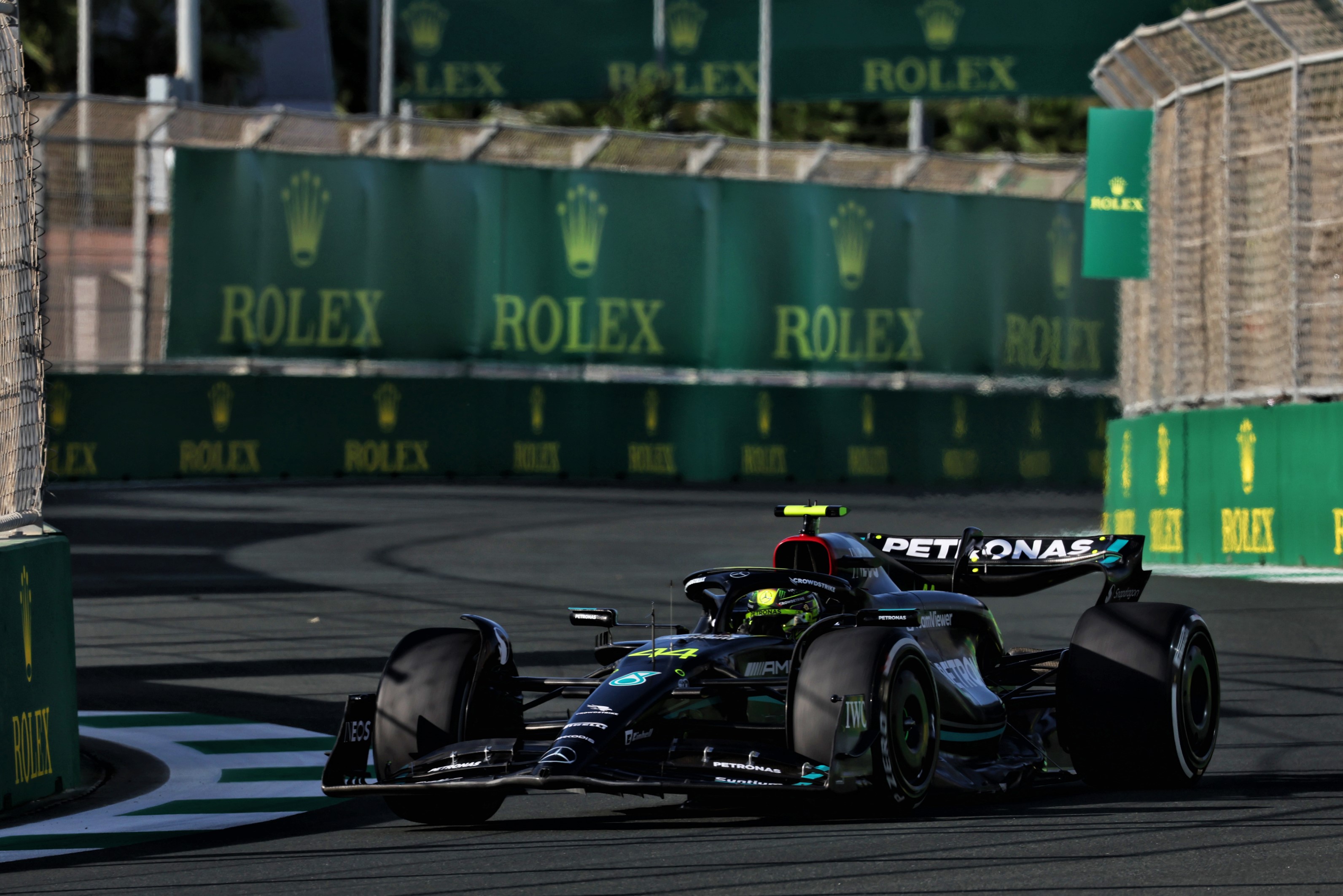
It’s all about living with the fact that you actually think you are just about to spin before the yaw angle sorts out that problem as the rear tyre grip increases. If the driver has the confidence they don’t need to do anything about it, they can leave it to the Pirellis to do the work.
If the driver is sitting that bit forward, they will not have the same sensation of how fast the rear is moving or when it stops. It’s not about the amount it moves, it’s about the rate of movement and I suspect that is what Hamilton is complaining about.
If the optimum tyre yaw angle is three degrees, then when it gets there it should stop increasing. If it’s five degrees, then fine, it should stop when it gets there. Otherwise you have a basic balance problem. The main thing you need to give the driver is the confidence that it will stop at whatever the highest grip yaw angle is.
If we look at the four fastest cars from the start of this season, we can see there is a difference. The wheelbase is restricted to a maximum of 3.6 meters, so in reality I don’t expect many teams to deviate too far from that.
So to get this comparison, we have scaled the cars to the same wheelbase from these comparisons. Using the Red Bull as the datum, we can see that the driver does sit just that bit further forward in all of the other top four cars.
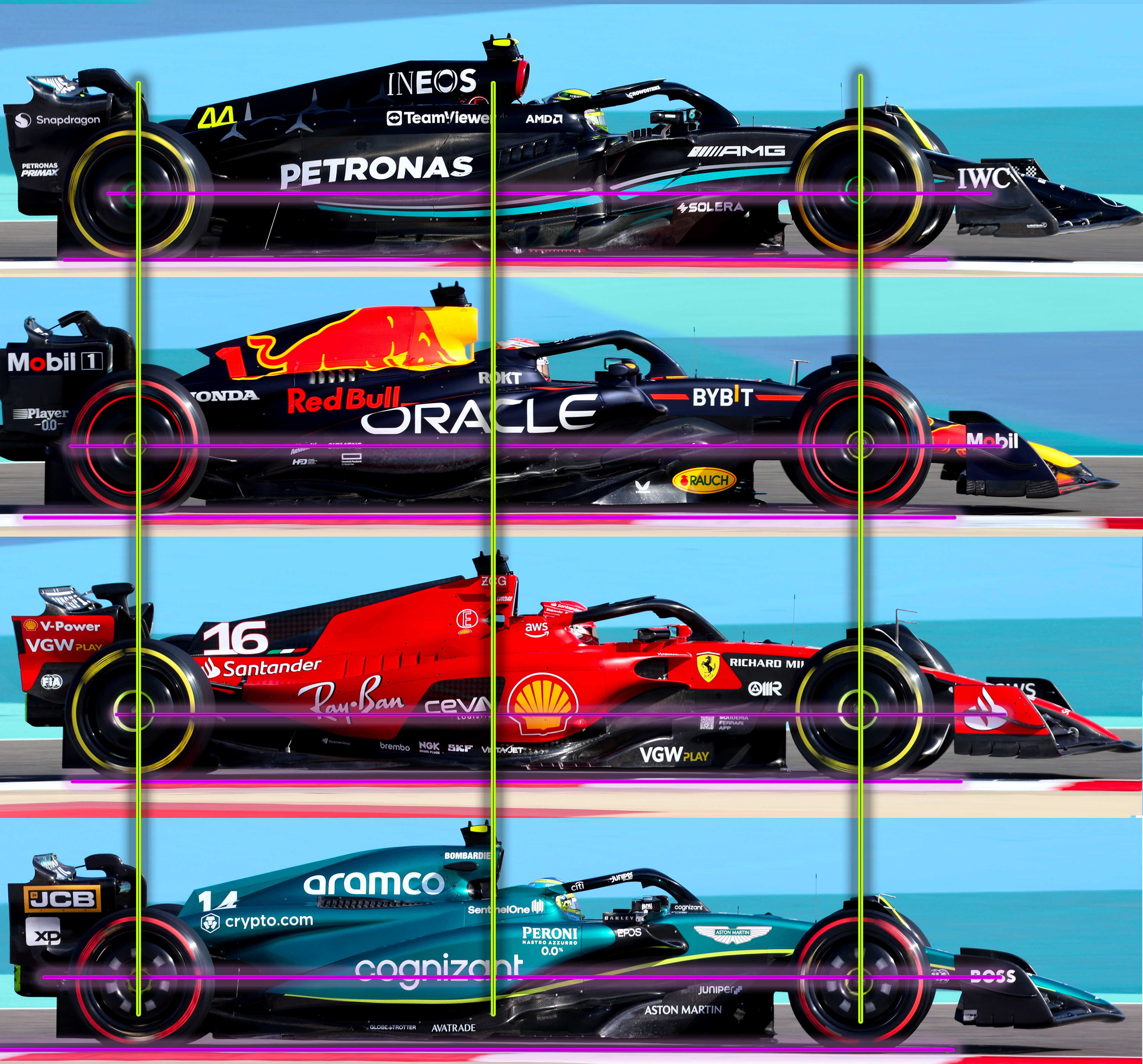
If we take a driver’s helmet from front to back, it is roughly 25cm so that gives us an idea of the differences. Relative to Red Bull, I would say the Mercedes and Ferrari drivers sit about 21-22cm further forward. In the Aston Martin, it is probably a little bit less – say 20cm.
That is a significant difference, so why would that be? The driver’s position is relative to the cockpit opening and that is tied in with the side-impact structure positions. So everything initially is a bundle of compromises to achieve the weight distribution, which again is tightly tied down in the regulations.
So you need to package everything, including the driver, to achieve that required weight distribution. Again, any movement with increased fuel load, from the sniff of an oily rag for qualifying to adding 100kg+ of fuel for the race, needs to be taken into account.
We talk a lot about the ‘concept’ and we have focused on the sidepods because this is the visual part that we can comment on. But if Mercedes and Ferrari need to have the driver this far forward to get into the correct weight-distribution window, then perhaps the cooling package they have created to be able to use this ‘zero’ sidepod is the main problem.
That could be one of the reasons that the Aston Martin is just that little bit more of an all-round package. With its ‘Red Bull-style’ sidepods, it doesn’t have to compromise the driver location quite so much.
Packing everything in and around the back of the chassis and the front of the engine means that the weight of those components needs to be balanced out. The driver is the only thing that to some extent is moveable.
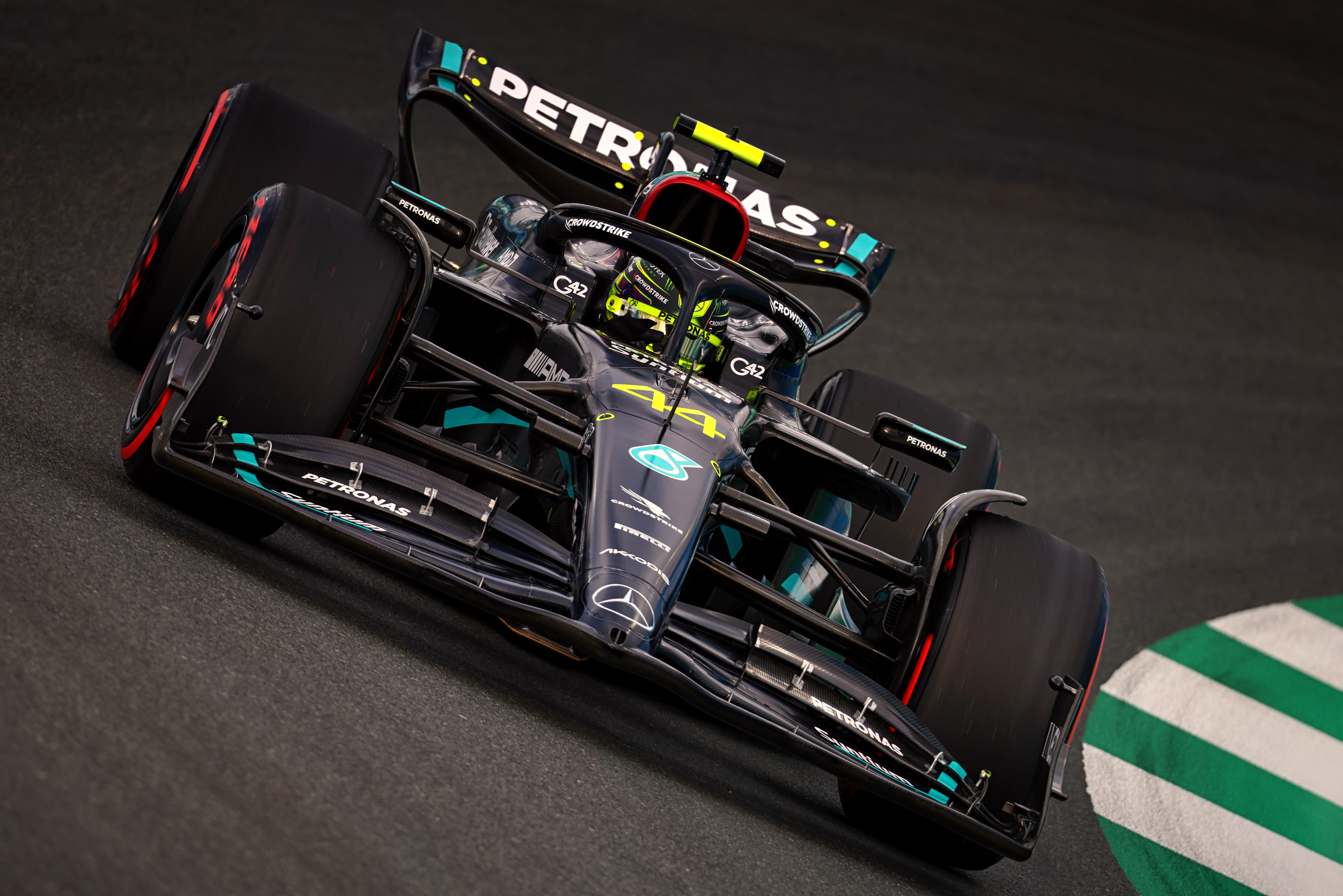
If this is the reason, then Mercedes’ problems could just be insurmountable this year. Well, nothing is insurmountable, but achieving it within the cost cap might just make it very difficult.
Yes, there are circuits where it won’t be as big a problem, but there are none where it won’t be a problem at all.
Back in the old days when we last had ground effect cars in Formula 1, the regulations were much more open. To get the maximum out of the underfloor, the throat area of that underfloor was much further forward than it is with our current regulations.
That meant that the aerodynamic centre of pressure of the underfloor was so far forward that you didn’t need a front wing, and with that forward centre of pressure you needed to move the weight distribution further forward, otherwise the car would be very nervous in fast corners.
Comparing the 1982 Brabham BT50 to the Mercedes W14 shows how big the difference is. In those days, the drivers really did sit on the front axle.
The wheelbase of the Brabham was around 2.8 meters, so about 72% of the current car’s wheelbase. That meant the relative position of the driver, in this case Nelson Piquet, to the front and rear axle is not quite as dramatic, as this picture shows.
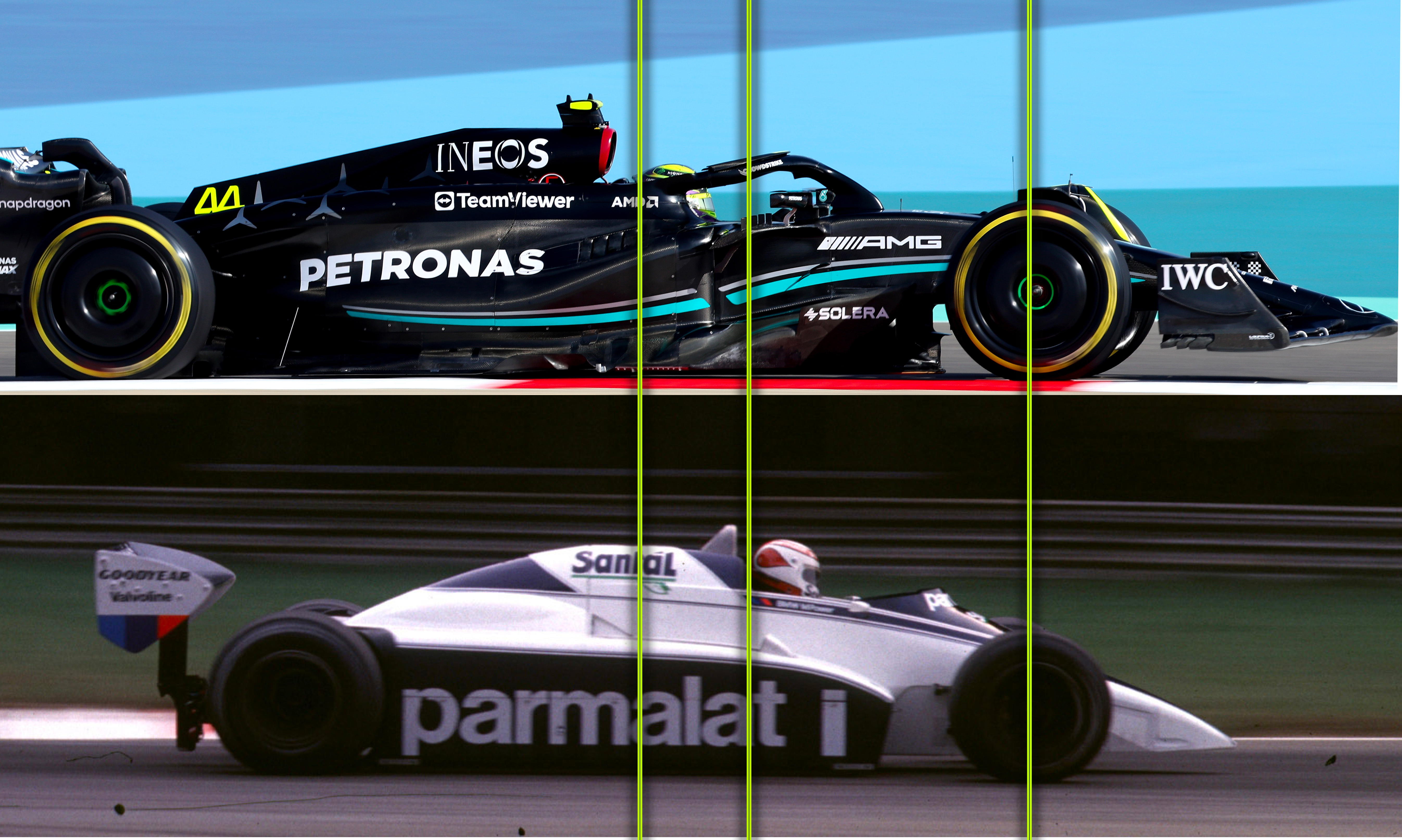
But even so, the driver is a lot further away from any feedback from the rear grip level than what you would get from a current car.
In those days the driver would often comment that he could check the front tyre temperatures himself.
If Hamilton has a problem feeling the rear of the current Mercedes, he should be very happy he wasn’t racing in the 1980s.


